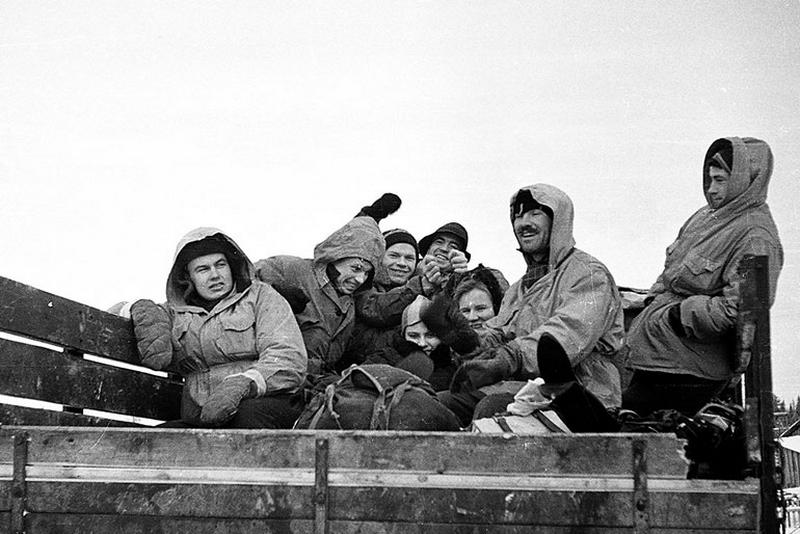The Unsolved Mystery Of The Dyatlov Pass Incident
By | August 10, 2019

On January 31, 1959, a group of nine students from the Ural Polytechnical Institute, led by twenty-three-year-old Igor Dyatlov, hiked into the Ural Mountains, intent on reaching the peak of Mount Otorten. They never made it out. Three months passed before all nine bodies were found and the cause of death remains a mystery to this day.
Based on evidence collected from their diaries and cameras, investigators surmised that the group began hiking through the pass to Otorten on February 1. They encountered snowstorms which reduced their visibility and caused them to deviate from the path. Instead of progressing toward Otorten, they ended up on the slope of the nearby Mount Kholat Syakhl. For reasons known only to them, they chose to make camp on this mountain, whose name meant “Dead Mountain” in the language of the Mansi tribe which was indigenous to that region. The mountain lived up to its name as the hikers never made it off alive.

On February 20, a search party was launched after the hikers failed to return from their hike. The bodies were found six miles from their destination. The search party arrived at the campsite first and discovered that the tent had been cut open from the inside and the majority of the hikers’ belongings, including their shoes and other gear which might have kept them alive in the below zero temperatures, had been left behind. The search party then noticed eight or nine sets of footprints, made by people walking completely barefoot, leading away from the campsite. The tracks led almost a mile away to a large cedar tree, where the bodies of Yuri Krivonischenko and Yuri Doroshenko were found barefoot and wearing only their underwear. Three more bodies, those of Dyatlov, Zinaida Kolmogorova, and Rustem Slobodin, were found on the way back to the camp. At this time, it was concluded that the hikers had all died of hypothermia, though it was a mystery why they would leave their camp the way they did.

On May 4, the other four bodies were discovered in a ravine seventy-five meters away from the others. The body of Thibeaux-Brignolles appeared to have a fractured skull. Lyudmila Dubinina and Semyon Zolotaryov had chest fractures. Dubinina was also missing her tongue, eyes, part of her lips, facial tissue, and a piece of her skull bone. Alexander Kolevatov was found in the same area but had no injuries. Zolotaryov was found with his camera but had left his gear back at the camp. Additionally, the bodies in the ravine were found with clothing belonging to other members of the group. For example, Dubinina’s foot was wrapped in Krivonischenko’s pants and Zolotaryov was found in Dubinina’s coat and hat. This suggests that the hikers died at different times and the living took items from the dead hoping to increase their chances of survival. But it doesn’t explain why they left camp without their gear in the first place.

The Soviet government closed the case on the incident in May of 1959, citing the cause of death as “a compelling natural force.” However, that didn’t stop others from speculating. If anything, the swift resolution of the investigation only provided more fuel for the conspiracy theorists. Eyewitnesses claim to have seen orange spheres in the sky on the night the hikers died. That, along with mild radiation found on the hikers’ clothing and a funeral guest who claimed the bodies had developed a tan, led many to suspect the deaths were a result of the Soviets testing a secret radioactive weapon. However, the amount of radiation was not significant enough to support this theory.

Earlier theories suggested that the hikers were killed by the Mansi tribe. While this would explain why the hikers left their campsite so ill-prepared, the injuries sustained by the bodies were far too forceful to have been caused by a human. Having ruled out humans, other theorists leaped to the extreme explanation that the hikers were killed by a yeti, citing the missing tongue as evidence of the attack. However, the missing body parts could just as easily have been the result of decomposition or scavengers. In the end, the most likely explanation is that three of the hikers died from the fall into the ravine while the others died of hypothermia. As for the reason behind them abandoning their camp without their gear, that may just have to remain an unsolved mystery.

